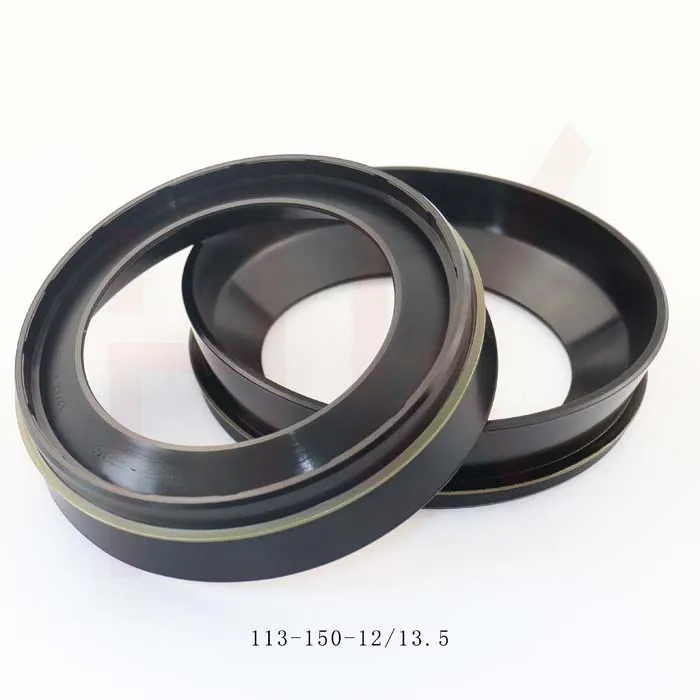Aug . 16, 2024 14:31 Back to list
Effective Solutions for Shaft Dust Seal Maintenance and Performance Optimization
Understanding Shaft Dust Seals Importance, Function, and Application
Shaft dust seals are critical components used in various machinery and equipment to prevent dust, dirt, and other contaminants from entering sensitive areas. These seals play a significant role in enhancing the efficiency and longevity of mechanical systems by ensuring that lubricants remain within the components while keeping foreign particles out. This article explores the importance, function, and applications of shaft dust seals.
The Importance of Shaft Dust Seals
In industries such as manufacturing, automotive, and agriculture, machinery operates under demanding conditions. Dust and debris can significantly impact the performance of moving parts, leading to premature wear, increased maintenance costs, and potential system failures. Shaft dust seals serve as the frontline defense against such contaminants, making them indispensable for the reliable operation of equipment.
By preventing particulate intrusion, dust seals help maintain the integrity of lubrication systems. Adequate lubrication is essential for reducing friction between moving parts, which in turn minimizes heat generation and wear. Consequently, this leads to improved efficiency and operational lifespan, making dust seals crucial for cost savings in maintenance and repairs.
Functionality of Shaft Dust Seals
Shaft dust seals function through a simple yet effective design that typically includes several elements—like a sealing lip, housing, and spring. The sealing lip is the most critical component, as it directly contacts the rotating shaft and provides a barrier against contaminants. The material used for seals can vary, with rubber, polyurethane, and neoprene being common choices due to their durability and flexibility.
shaft dust seal

The housing of the seal is mounted to the stationary part of a machine, ensuring stability. The spring incorporated into the design applies pressure to the sealing lip, helping maintain contact with the shaft. This design allows the seal to adapt to any slight misalignments or movements, ensuring continuous protection even during operation.
Applications of Shaft Dust Seals
Shaft dust seals find a wide range of applications across various industries. In the automotive sector, they are used in wheel bearings, transmissions, and engines to keep out dirt and prevent oil leaks. Agriculture machinery, such as tractors and harvesters, also rely on these seals to protect moving parts from the harsh outdoor environment.
In industrial machines, dust seals are essential for equipment like conveyor systems, pumps, and compressors. They help safeguard the internal components from dust and contaminants, which can significantly improve reliability and reduce downtime in manufacturing processes.
Moreover, in the field of robotics and automation, where precision is vital, shaft dust seals play a crucial role in ensuring that moving parts operate smoothly without interference from dust or debris.
Conclusion
In conclusion, shaft dust seals are vital components that contribute significantly to the longevity and efficiency of various mechanical systems. By preventing contaminants from entering sensitive areas, these seals protect not only the immediate components but also the overall system. As industries continue to evolve, the importance of maintaining clean and efficient machinery remains a top priority. Investing in high-quality shaft dust seals can lead to substantial benefits in performance, safety, and cost-effectiveness, making them essential for any machinery reliant on rotating shafts.
-
The Trans-formative Journey of Wheel Hub Oil Seals
NewsJun.06,2025
-
Graphene-Enhanced Oil Seals: Revolutionizing High-Pressure Oil Sealing
NewsJun.06,2025
-
Future of Hydraulic Sealing: Advanced Intelligent TCN Oil Seals
NewsJun.06,2025
-
Don’t Let a Broken TCV Oil Seal Ruin Your Day
NewsJun.06,2025
-
Bio-Inspired Dust Seals for Better Sealing Performance
NewsJun.06,2025
-
Biodegradable and Sustainable Hydraulic Seal Materials
NewsJun.06,2025
-
Top Oil Seal Solutions for Your Industrial Needs
NewsMay.22,2025
Products categories
















